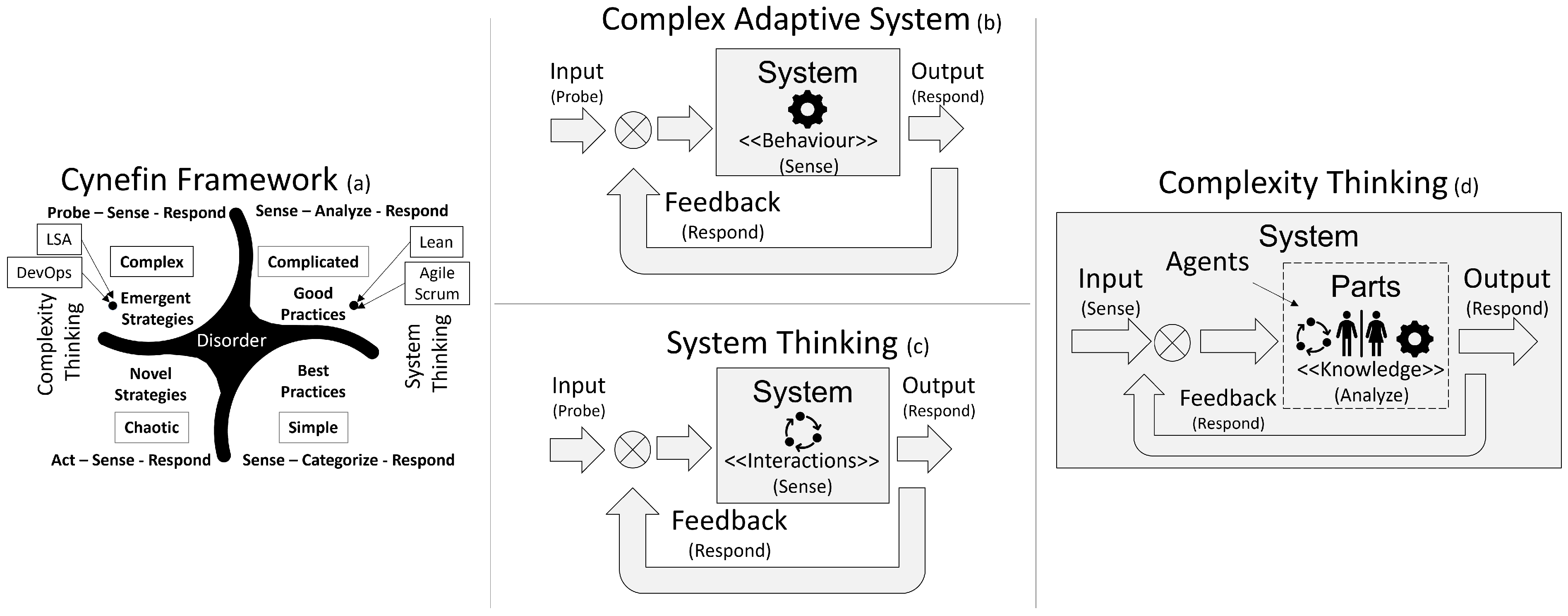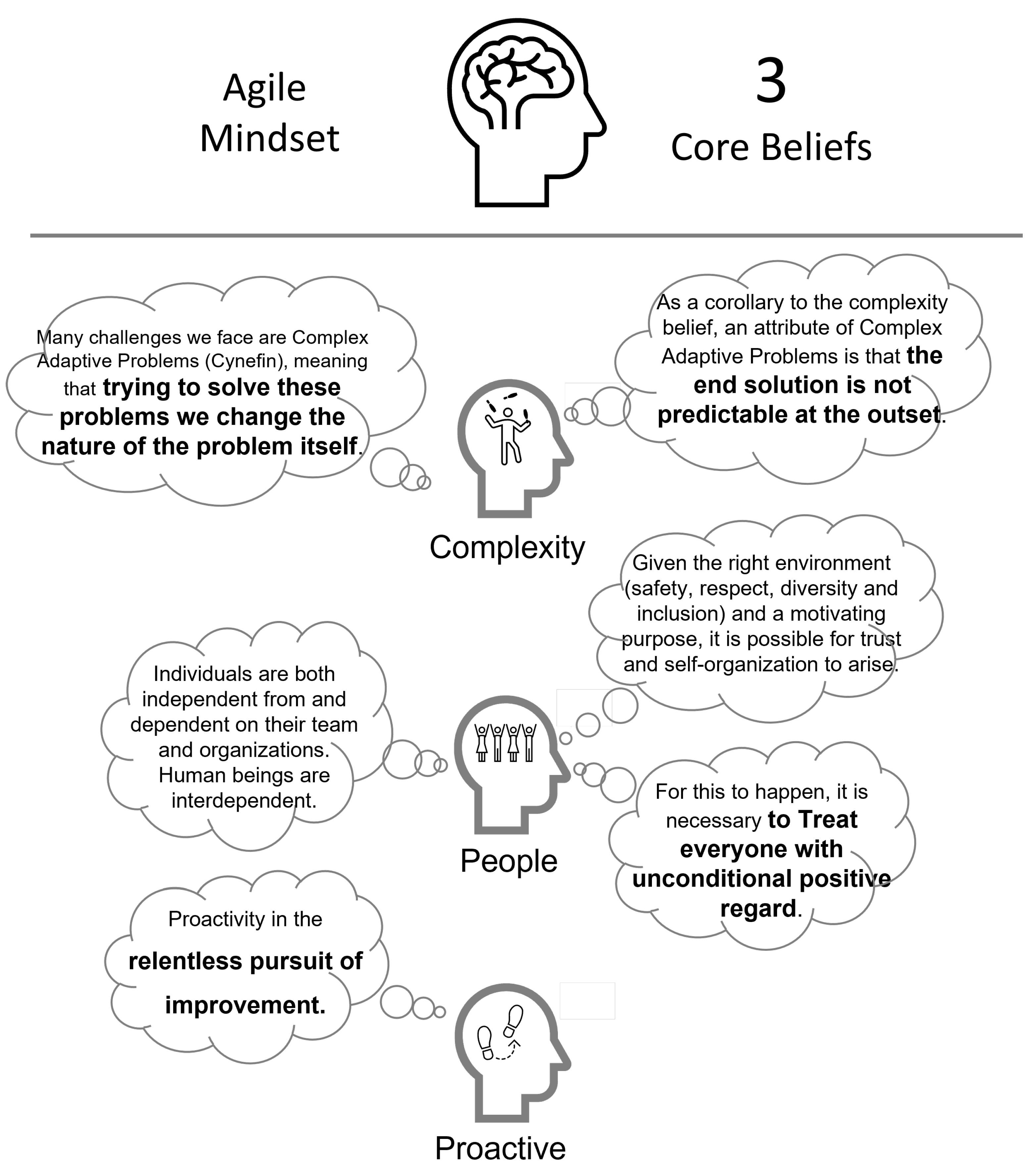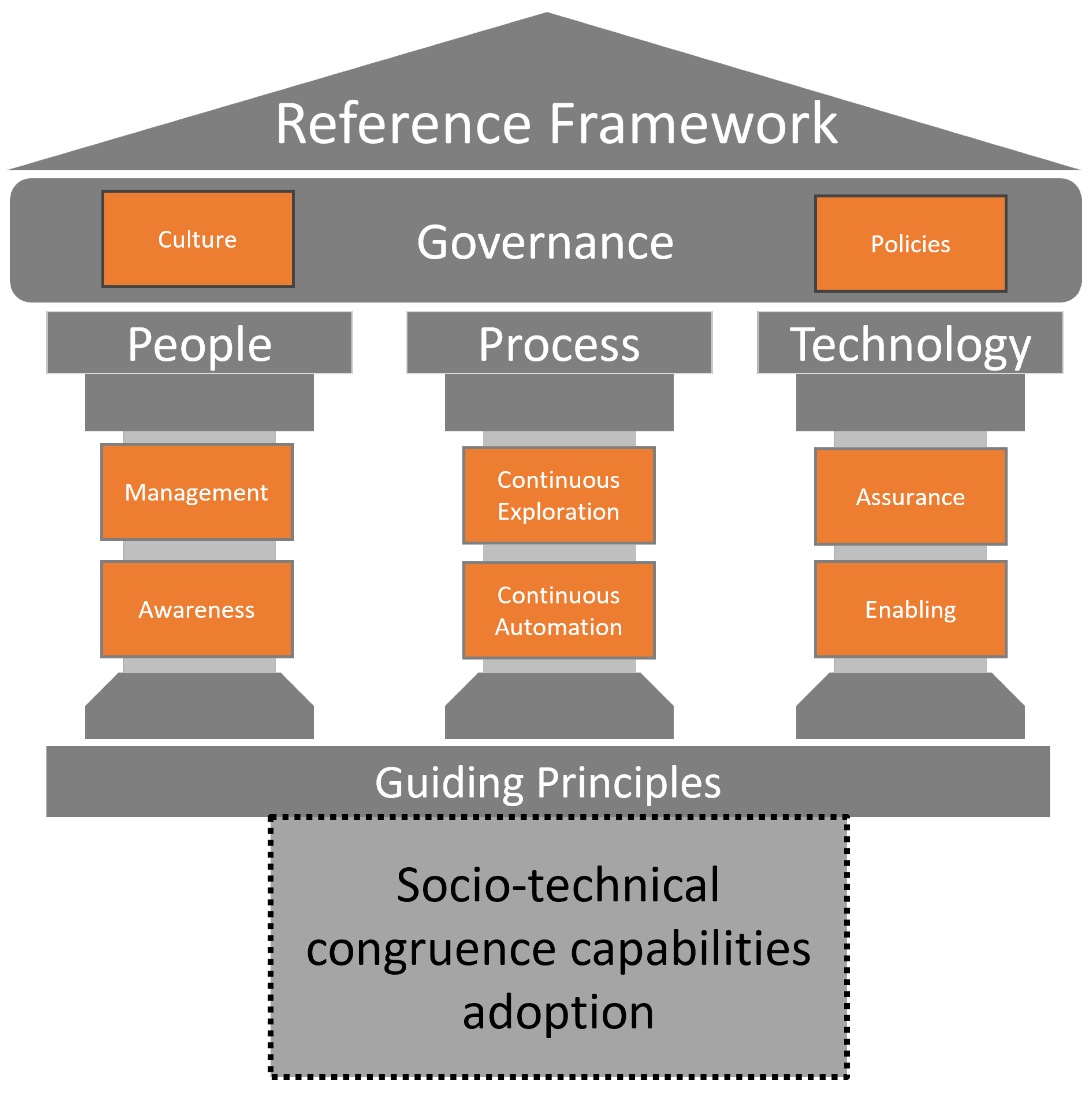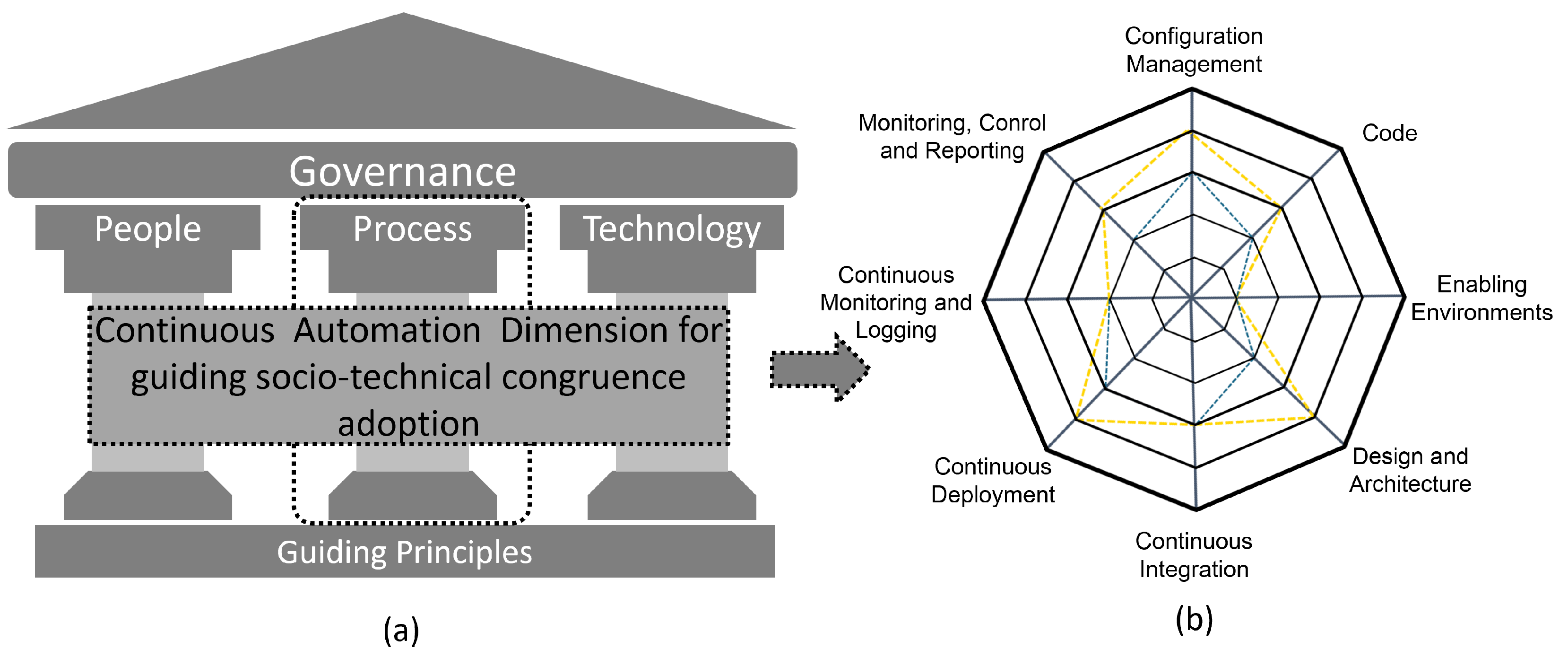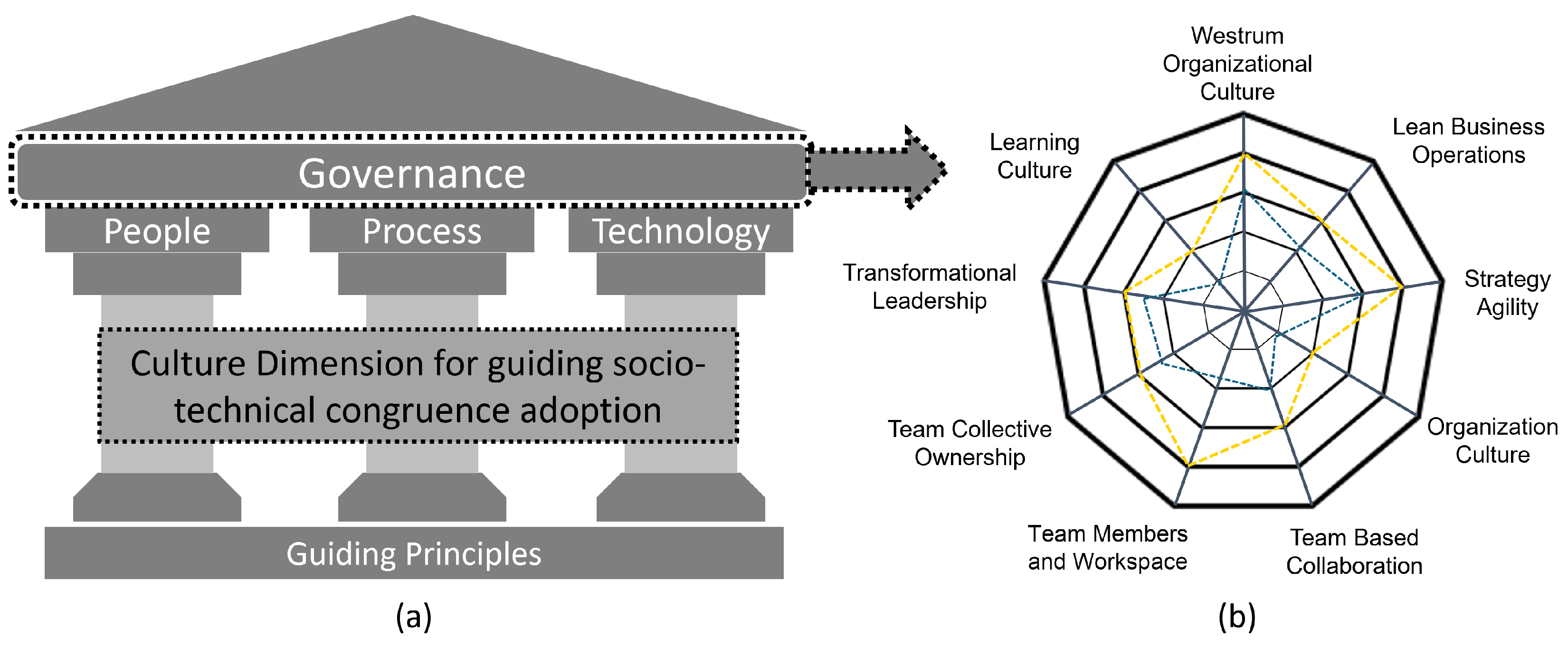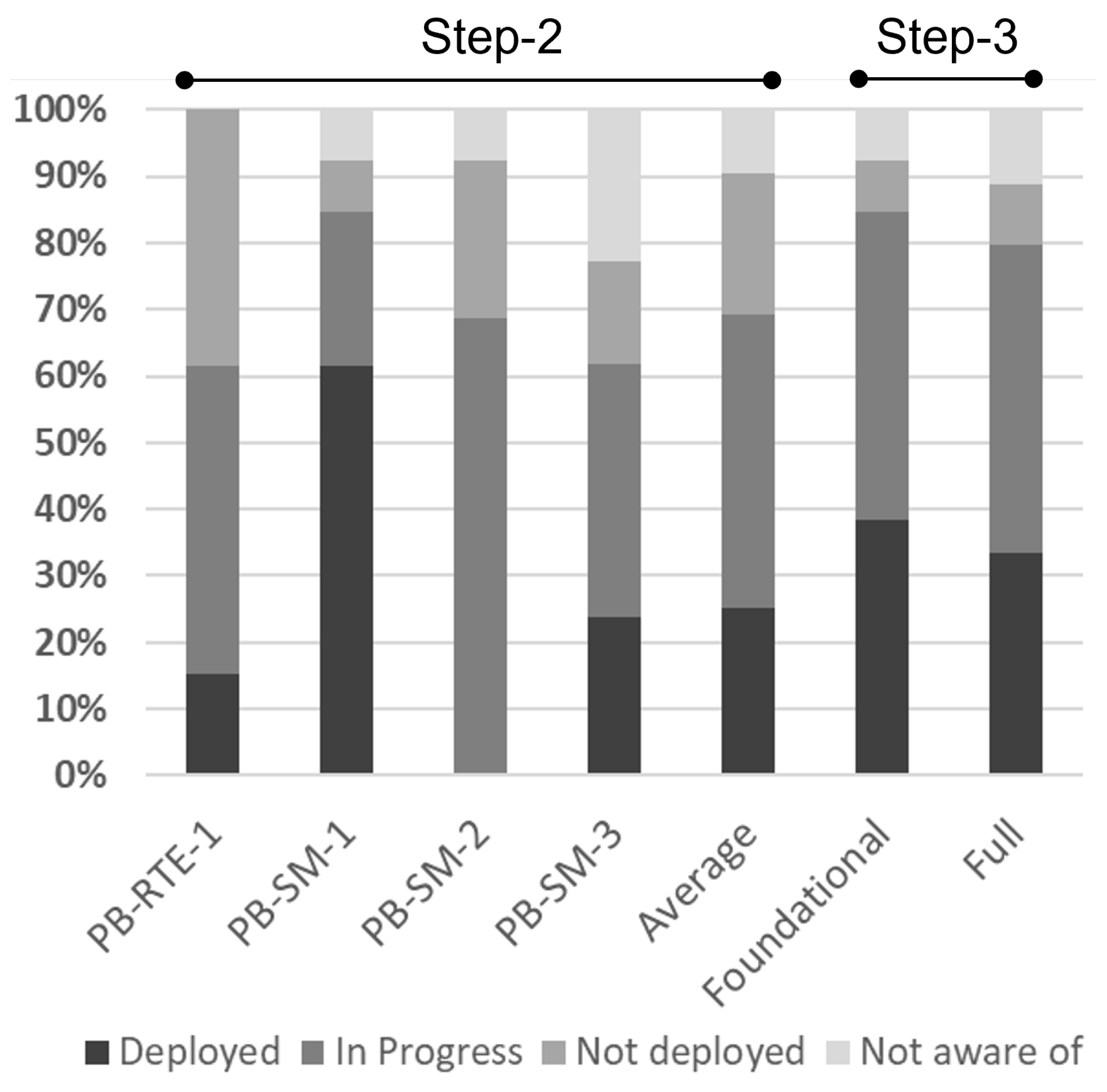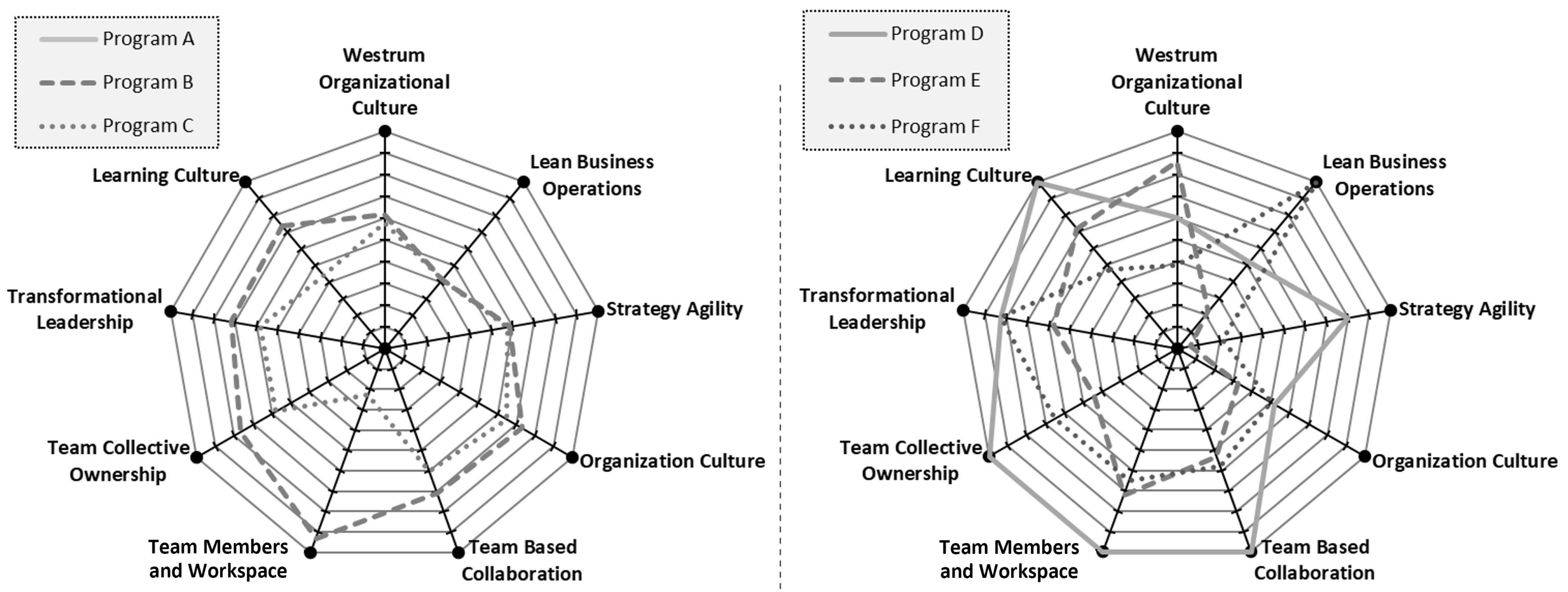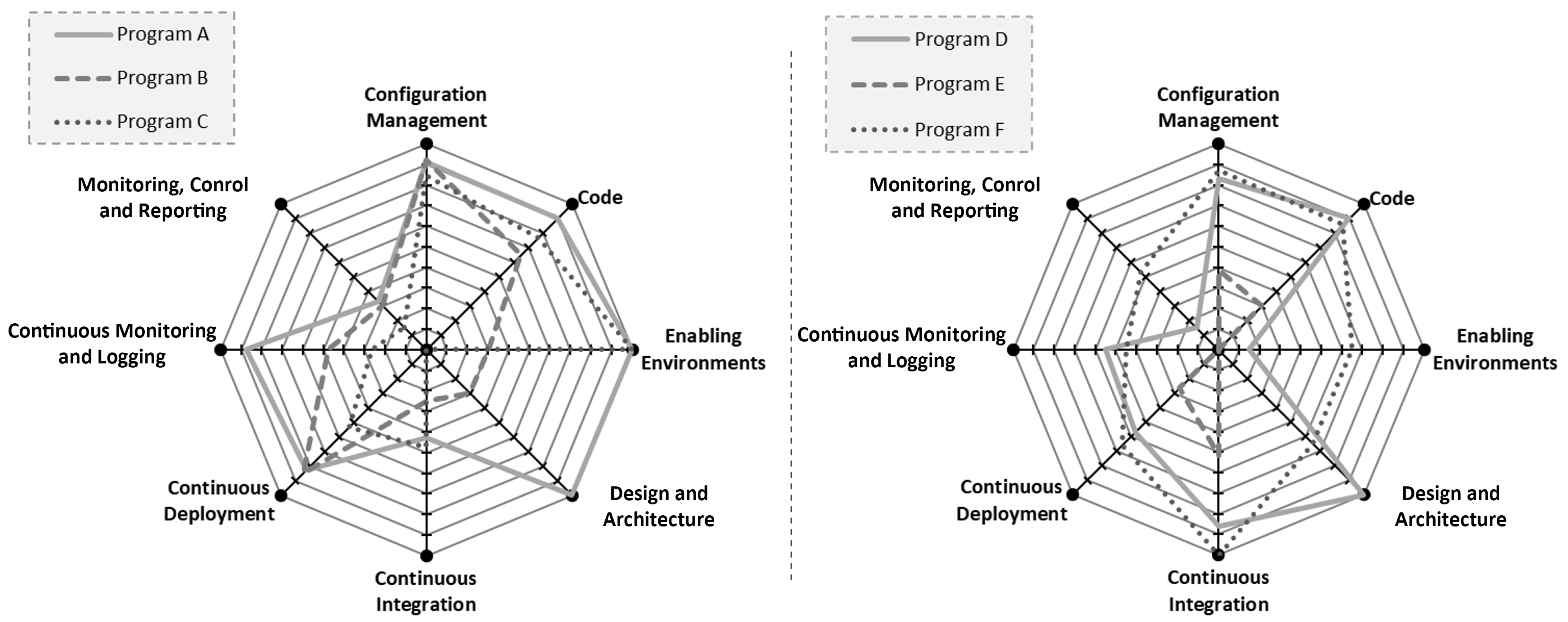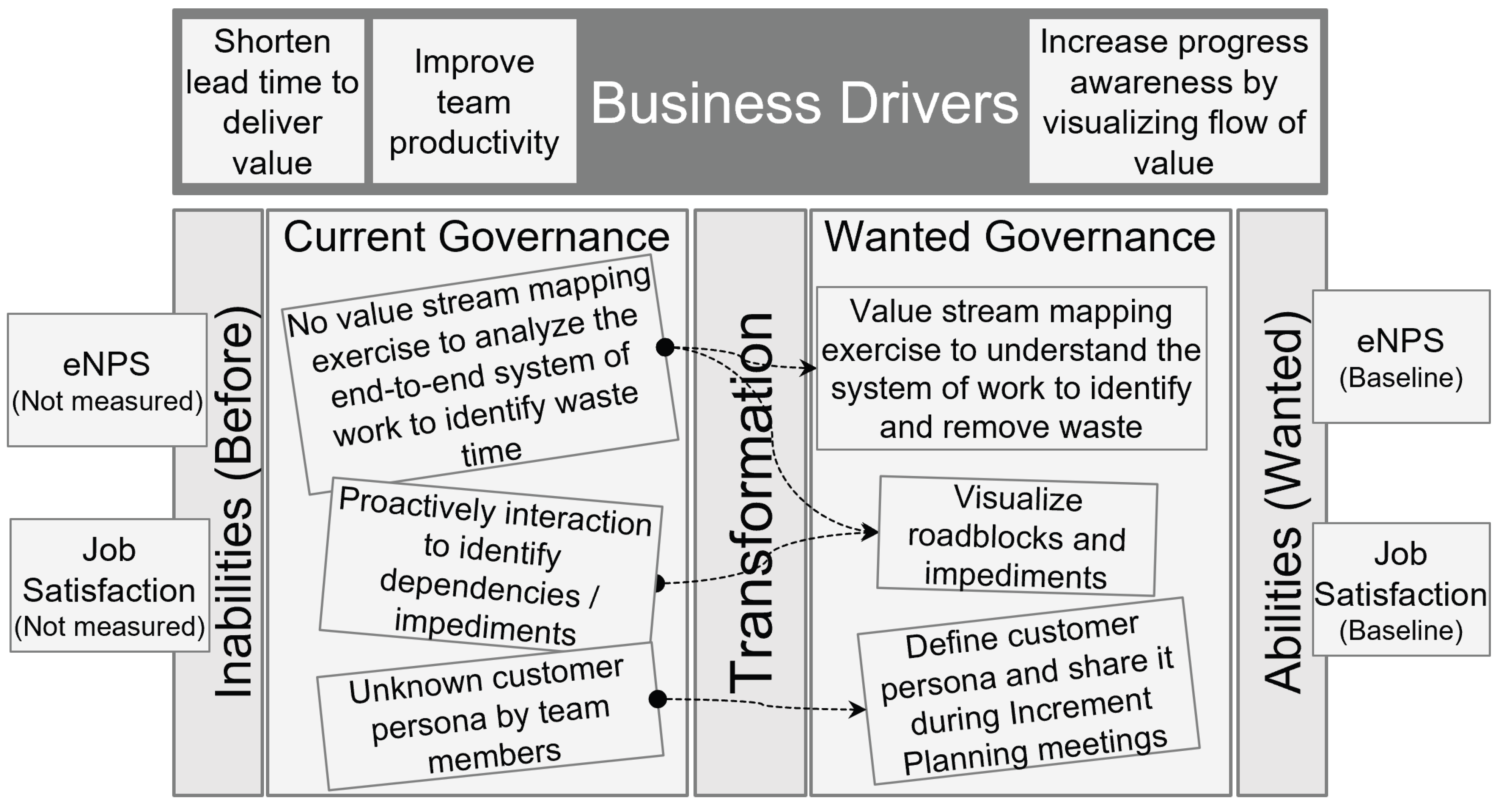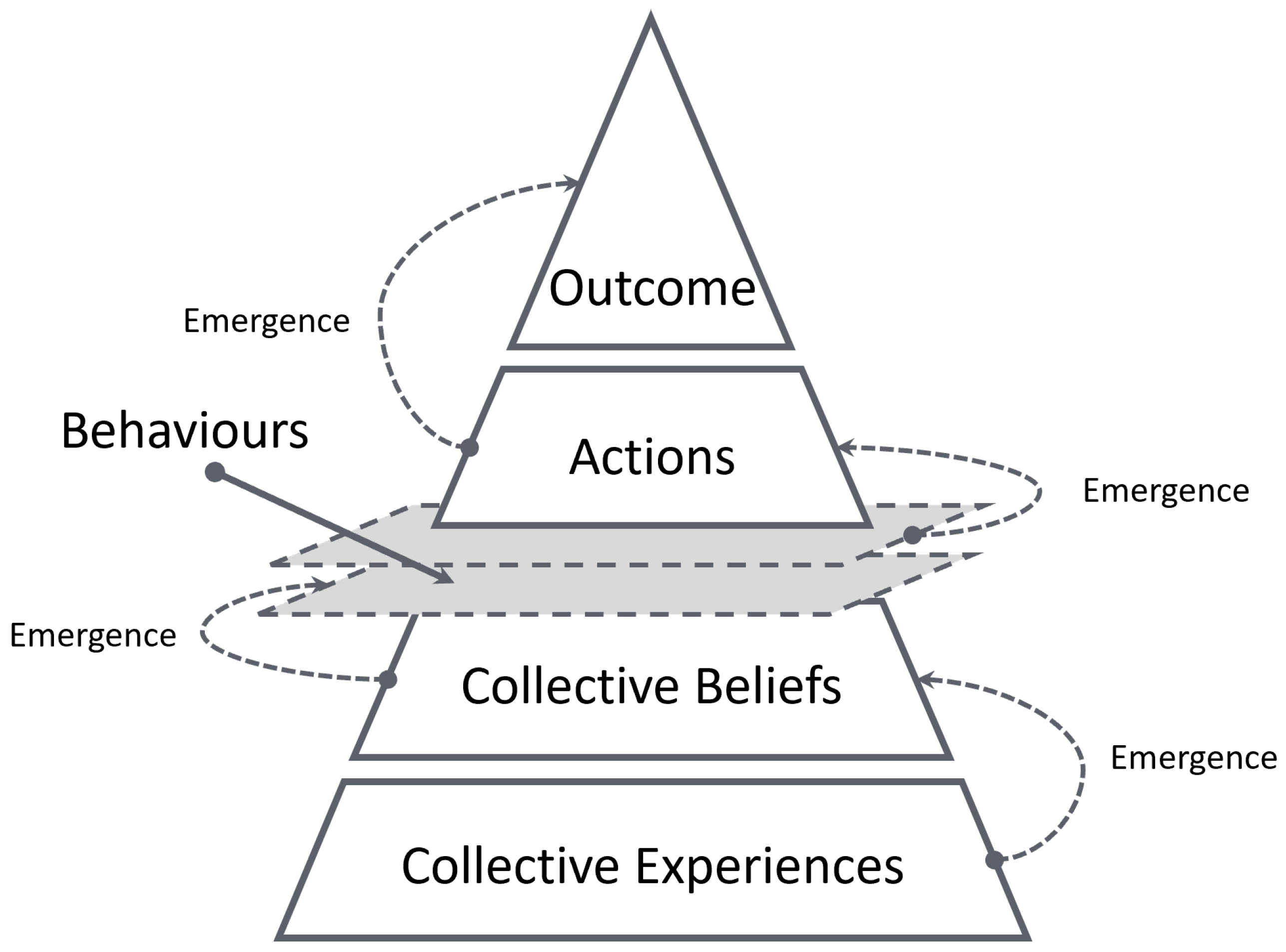1. Introduction
The inherent vulnerability of complex systems to single-agent disruptions poses a significant threat to their reliability. The 2021 blockage of the Suez Canal (
Figure 1 Image by Rosenfeld Media—
https://www.flickr.com/photos/rosenfeldmedia/52597293760, accessed on 9 May 2025—Attribution-NonCommercial-NoDerivs (CC BY-NC-ND 2.0)—
https://creativecommons.org/licenses/by-nc-nd/2.0/, accessed on 9 May 2025) illustrated the fragility of complex systems such as global supply chains, which are susceptible to disruption by a single point of failure and the consequences to global trade. The reliability of the system, defined as the probability of performing as intended, requires both robustness and resilience [
1]. A system is robust when it is resistant to being moved from a steady state, while a system is resilient when it is able to recover to a steady state after the disruption without external intervention.
Digitalization is a primary driver of the significant challenges confronting technological organizations operating in today’s volatile, uncertain, complex, and ambiguous (VUCA) world. These challenges include the accelerating pace of technological development, shorter time-to-market pressures, and the increasing prevalence of interconnected “systems of systems” [
2]. Organizations, as systems, face a lack of predictability and a greater need for robust risk management [
3]. The system environment has become more complex, characterized by an increase in the number of components and the complexity of their interactions, resulting in organizational silos of silos and fragmented stakeholders and specialists [
2]. Consequently, this complexity leads to emergence of unpredictable events and processes that influence the decisions of change agents. Addressing these challenges derived from digitalization requires individuals to develop competencies in system thinking and leadership [
2]. Recently, Govers et al. emphasized the need for a holistic approach when working on socio-technical systems (STS) in the context of digital transformation. This approach is based on five principles (division of labour, human scale, self-organization, effective and healthy hierarchy, and minimum critical specification) to manage complexity and achieve a sustainable organizational design [
4].
In the digital age, organizational success for software organizations hinges on their ability to understand change through the lens of complex adaptive systems (CASs) [
5]. CASs are characterized by their adaptiveness, maintaining performance despite significant internal or external changes [
6] and their nature as open systems that exhibit emergent behavior [
7]. This perspective challenges traditional notions of component separability and emphasizes concepts such as emergence, holism, and downward causation [
7]. Consequently, effective software engineering practices are intrinsically linked to the design of the organizational ecosystem, which focuses on team structures, communication, and coordination to enhance performance and adaptability. Research applying Conway’s Law [
8] confirms the dependency of software delivery on both communication structure and system design [
9], a finding supported by the need to align technical and social systems [
10]. Although there are prescriptions for this alignment [
9], achieving it requires more than just a good system design [
11,
12]. Ultimately, software development can be conceptualized as a socio-technical system where the alignment of technical (job to be done) and social (organizational coordination) elements, a concept known as socio-technical congruence (STC) [
10], is crucial to achieve the desired outcomes.
Recent advances in STC research increasingly consider human factors and social aspects [
13,
14], recognizing that organizational interactions are better understood through the lens of complexity theory and the CAS [
15]. Key tenets of the CAS, such as self-organization, emergence, non-linearity, adaptation/evolution, feedback (based on history), and operation between order and chaos, make it a recommended model for addressing complexity in social sciences, where system outcome predictability is inherently limited [
15].
This article furthers the study of STC by examining software development as an open system operating as a CAS. We propose that the organizational ecosystem design, viewed and understood through the CAS lens, provides a framework for testing hypotheses and generating validated learning, focusing on emergent CAS properties, that build on previous work in STC concerning coordination and alignment. We argue that a deeper understanding of CAS enhances the ability to achieve and adapt business outcomes.
The effectiveness of software engineering practices is inherently linked to how an organization develops its “constructors”, that is, the essential tools and methodologies used not only to build theoretical models and practical solutions but also strategic approaches to drive organizational change. These constructors evolve the organizational system substrate and influence emergent behaviors among agents (investors, suppliers, customers/users, and employees). The long-term sustainability of an organization is directly linked to its ability to attract talent and cultivate a socio-technical balance. This balance, integrating sociological and psychological dynamics with the technical aspects of work (organizational design, processes, and measurement via KPIs and targets), is crucial for maintaining a consistent flow of value [
16].
Although adopted software engineering practices contribute to robustness in development and delivery, they do not guarantee the achievement of the right outcomes. Recent studies on DevOps adoption [
17,
18,
19] reveal a tendency to prioritize automation of engineering practices, often overshadowing critical people-related factors for successful change. The Agile Manifesto [
20] started a movement against traditional waterfall management for many software practices. Sadly, Agile transformation programs, methods, and tools often fall short in helping organizations create better software products due to a misalignment of Agile principles with existing leadership principles and management principles [
16]. Organization culture and lack of leadership support are the leading causes of unsuccessful Agile delivery [
21], with resistance to cultural and mindset shifts at leadership levels being a major obstacle [
22]. Reviews of large-scale Agile transformations (LSA) [
23,
24,
25] further emphasize socio-cultural factors as primary challenges (e.g., resistance to change, integration with non-agile parts of the organization, lack of knowledge, requirements management) and proposed success factors (e.g., communication and transparency, knowledge management, training and coaching), with fewer considerations for engineering practices (e.g., tools, automation, testing).
Ultimately, enhancing sustainable performance across the organizational structure should be a primary management objective. This requires a holistic and lean approach to foster efficiency, business excellence, and value creation [
26]. The enduring success of organizations increasingly depends less on software engineering practices alone and more on their ability to consistently deliver software projects that yield positive business outcomes. Business Agility emerges from understanding and embracing this complexity, prioritizing the human element within the system, and striving for continuous improvement in system outcomes [
27] as a central tenet. Expanding on this perspective, Turner et al.’s
THE FLOW SYSTEM [
28], built upon complexity thinking, distributed leadership, and team science, provides a holistic framework for understanding the interconnectedness of software development and the broader organizational and societal context, addressing crucial interdependencies [
16] for long-term organizational viability.
Conceptualizing socio-technical systems as CASs involves observing the interplay between management systems (organizational structures, processes, and measures) and the adoption of Agile methods, tools, and frameworks. These interactions create new connections that change the attributes of the system’s substrate, primarily through the exchange of information and energy between organizational agents and units [
29]. Over time, trust-supported connections and interactions foster knowledge-based relationships, ultimately reducing system complexity with stable and trustworthy relations and yielding co-learning and long-term innovation [
30].
This paper proposes that the convergence of socio-technical attributes with the complexity science in CAS leads to more effective constructors and new attributes, such as more effective teams and financing models, that drive desired outcomes. CAS sensing enhances the resilience of the organizational system of work (SoW) in achieving these outcomes. Sense-making techniques (methods used to interpret and understand complexity) and the development of appropriate constructors are crucial for building resilience in this complex ecosystem, guiding change agents’ decision making [
31].
Conversely, when socio-technical attributes are manifested through more linear transformations and scaled, any existing misalignment amplifies divergent outcomes and significantly reduces organizational resilience. This misalignment also hinders sense-making capabilities and the effective use of scaffolding (structures to facilitate understanding and development of new concepts), increasing the likelihood of unintended outputs and/or wasted resources. A major impediment to cultural and mindset change is the persistence of legacy thinking and a lack of direct leadership engagement in fostering these shifts [
22]. Understanding socio-technical complexity (STC) is, therefore, instrumental to software engineering practices, profoundly influencing organizational vitality and sustainability in an era of accelerating change [
27].
Given the economic imperative for organizations, this research explores how misaligned motivations across organizational entities affect socio-technical alignment within a CAS. By a deeper understanding of the factor interdependencies and acknowledging the emergent nature of system attributes, this work aims to identify socio-technical factors that enhance an organization’s capacity for timely sensing, analysis, and response, thereby normalizing continuous change. To this end, we formulate four research questions focused on achieving organizational efficiency:
RQ1: Which Lean and Agile socio-cultural practices help to assess the current and wanted position of the system, with an emphasis on the system robustness?
RQ2: How do Lean and Agile socio-cultural practices, in conjunction with DevOps engineering practices, help to assess the current and wanted position of the system, with an emphasis on the system robustness?
RQ3: How do sense-making techniques supported by understanding the current system position from a socio-technical congruence (STC) view point help transformation agents in defining the SoW transformation journey in a CAS?
RQ4: How does socio-technical congruence (STC) augmented with a CAS allow teams to build robust technical execution and human-focused solutions to have a more resilient and human-centric execution model in a time of VUCA?
These questions are addressed in this paper by developing a theoretical model of STC as a CAS grounded in previous literature. This model proposes a novel STC evolutionary journey based on dual systems. The first, an analytical system (System-I), focuses on robustness through compliance with Lean and Agile socio-cultural practices (addressing RQ1), integrated with DevOps engineering practices (RQ2). The second, a holistic system (System-II) emphasizes resilience through the acceptance of system–actor interdependence and the application of sense-making techniques (RQ3). This leads to enhanced resilience in the SoW and addresses RQ4 via an evolutionary journey defined by change actors. The dual system model was empirically explored through a case study involving six programs undergoing transformation, focusing on Lean & Agile practices for human factors and social aspects, and DevOps practices for software engineering, to answer the research questions.
On summary, the key contributions of this article are the following:
Theoretical model: A novel theoretical model is proposed to adopt socio-cultural practices bridging the gap between social and technical aspects through the lens of congruence in alignment with the literature.
Evolutionary journey: An evolutionary journey is presented based on an analytical system to assess robustness and a holistic system complemented by sense-making techniques to achieve greater resilience in the SOW.
Analytical construct: A set of analytical assessment constructs is defined to assess the robustness of the SOW considering socio-technical aspects.
Guiding construct: A guiding construct is introduced to promote sense-making techniques, such as narratives for sense giving, to help transformation agents define the evolutionary journey towards greater resilience in the SOW.
STC methodology: A novel STC methodology (supported on previous constructs) is formulated to guide change in the SOW and empower transformation agents for achieving organizational efficiency.
Empirical validation: The results from case studies conducted within six programs in an organization provide empirical evidence to evaluate the initial steps of the formulated STC methodology in addressing resilience and robustness in the SOW.
STC outcomes: The case study results highlight the significant effort required to enable transformation agents and engineering teams to achieve greater resilience and robustness in a VUCA world.
The remainder of this paper is structured as follows. First,
Section 1 presents the theoretical foundation that includes the hypothesis statement and the background and theory development, which is derived from the Westrum generative organizational model [
32], psychological safety [
33,
34], complexity thinking [
35], and Lean and Agile culture adoption [
20] as part of the software model for the emergence of system’s resilience. Next, the relevance of socio-cultural aspects are covered in
Section 3, where the novel theoretical contribution is addressed.
Section 4 complements a maturity model, based on technical and socio-cultural aspects, with sense-making techniques for guiding transformation, representing our methodological framework.
Section 5 formulates a STC methodology with detailed steps to support change agents in planning their STC evolutionary journey. Then, a model evaluation (
Section 6) is carried out using responses to a maturity survey and narratives from project contributors to ensure system robustness. Finally,
Section 7 discusses the implications of our findings, and
Section 8 addresses limitations and future work.
5. Methodology
A digital transformation journey as the one proposed in this section for the software model must consider the awareness, readiness, planning, and execution phases [
65].
The awareness phase is the organization’s decision to initiate the transformation journey, leadership support, understanding the drivers of change, and self-perception of current inabilities in terms of SoW performance and socio-technical practices.
The readiness phase involves studying the current position of SoW with guided assessment on the reference maturity model on socio-technical practices.
The planning phase involves prioritizing and roadmapping safe-to-fail experiments in a collectively aligned transformation plan.
The execution phase involves guiding the SoW to a desired position when probing experiments to improve SoW performance and/or gain competencies adopted by agents in the SoW. The outcome of each iteration in the execution phase is a new current position, representing the readiness phase for a systematic implementation and maintenance in a SoW’s continuous improvement journey for organizational performance.
5.1. Socio-Technical Congruent Methodology
The proposed methodology (
Figure 7) relies on an evolutionary journey, supported by gathering insights from dual systems. The methodology considers sense-making techniques supported by six steps with the aim to provide answers to RQ1, RQ2, RQ3, and RQ4.
Step 1—Engage: to obtain buy-in from the transformation agent. This agent obtains the organizational power to promote, sponsor, and engage a value stream and individuals on the transformation journey. Transformation helps to align the strategy by influencing teams and individuals [
3], enabling sense giving to guide actions and decisions [
31] and supporting the impact of the transformation journey while cultivating and promoting the culture [
65].
Step 2—Awareness: to gain foundational awareness of the SoW situation by gathering input from the coordinator agent and SMEs. The coordinator agent, via the
Gathering insights constructs
Table A1 in
Appendix A, aggregates the SoW’s details to trigger the start of the journey, and SMEs self-assess their current position for foundational practice items with the support of assessment model constructs in
Appendix B with a focus on socio-technical capabilities. As an outcome of this phase, business drivers and self-assessment on socio-technical practices are gathered as analytical System-I constructs.
Step 3—Assessment: Guided interviews are facilitated by change agents to cover the
Deep Dive Assessment (the entire set of practice items in the assessment model constructs in
Appendix B), as input to depict the current robustness level of the SoW. Facilitator change agents might be internal or external individual with the right level of agency to coach or mentor members in the SOW. The guided assessment uses the questionnaire as an analytical System-I construct, while System-II micro-narratives on each question provide an understanding of the underlying aspects of the socio-technical practices to SMEs and situational background context of the SoW to the change agent.
Step 4—Transformation Plan: The insights collected from the awareness and assessment steps help to build a first version of the SMF canvas. This first version of the canvas collects business drivers for change from the awareness phase, the current position on the adoption of socio-technical practices, and the KPIs in use for SoW performance from the assessment phase. The shared situation with change agents is a System-I constructor. The canvas tool supports the emergence of System-II narratives and discussion among all agents. As an outcome, improvement actions (in the form of safe-to-fail experiments for socio-technical practices adoption) are prioritized in a plan to pursue the increase of robustness in the SoW. This plan represents the evolutionary journey towards continuous improvement.
Step 5—Practice Adoption: SMEs create context-appropriate incremental improvement actions within the team’s practice area by iterations. Each iteration includes an inspect and adapt session to create a level 1 and/or level 2 OODA loop. SMEs and change agents collect System-II narratives from the team. Through the lessons learned, SMEs apply micro-actions that are guided by System-II narratives to foster new behaviors and shift team orientation towards desired outcomes.
These build a collective set of learned lessons where SMEs gather emerging narratives to apply alternate micro-actions as tactics for constructors of new behaviors and competences to shift the team orientation towards the desired outcome. By guiding with holistic System-II narratives, the approach embeds the adaptive nature of the emergent system rather than following practices of adoption blindly.
Step 6—Conclusion and the Next Desired Position: The SMF canvas is updated to include an evaluation of practices, KPI tracking, and narratives aimed at reaching the intended TO-BE state at the SoW level, thereby constituting the new AS-IS.
An introduction of the journey is continuously shared with change agents as an iterative process between steps 4 to 6 for continuous improvement of the SoW to pursue the increase in the resilience of the SoW.
5.2. Specification of the Gathering Insights Construct
Understanding WHY an organization’s embarks on a transformation journey through a disciplined delivery model is crucial for both sowing the seeds of change and gaining insights into the organization’s context (the SoW).
With the dual purpose of gathering insights, as well as feeding the SMF canvas with early insights on business drivers for the future emergence of System-II narratives, a questionnaire was built and organized into four sections.
Entity Details and Key Contacts: aims to collect essential contacts for the workstream, including the program’s sponsor and subject-matter experts (SMEs).
Adoption journey focus: to understand which capability areas allow deeper interest in the transformation (e.g., culture capability); what the business drivers are, or the WHYs as reasons to move into the journey (e.g., boost innovation or shorten lead time); and what the areas of perceived waste are within the SoW, or which aspects are considered as objects that can be used as constructions for improvement (e.g., which software engineering practices must be followed and how workstreams share information or energy).
Program awareness: collecting insights on the value stream’s focus, program socio-details in terms of the number of teams and headcount, the type of software being delivered, and the disciplined delivery model in place.
Best time to start the awareness and assessments steps of the methodology (
Figure 7) to understand the analytical System-I insights (AS-IS robustness), and other contextual comments.
This construct has been defined to be answered by a transformation coordinator agent nominated by transformation agents (leadership).
Table A1 in
Appendix A includes examples of the questions collected by this questionnaire.
5.3. Specification for the Assessment Model Construct
The assessment model construct is based on socio-technological practice items grouped in practice areas within pursued capabilities. This assessment model is used as analytical System-I construct to measure the SoW’s robustness. Practices consider enabling guiding principles from Lean and Agile (e.g., visualize flow, effective prioritization, or deliver customer value) and software engineering (Everything as Code, continuous automation, shift-left, built-in quality, and inner sourcing).
Each practice item has been classified with its relative potential impact within the SoW called practice journey. The practice journey starts with foundation practice items that shall be used as early constructs. Then, it continues with highly recommended items that shall be built upon and used as constructors once foundation practice items have been adopted within the practice area. To conclude, recommended practices items shall be adopted for continuous improvement in the practice area. This aids in choosing practices to be incorporated into the SMF canvas tool’s current position, facilitating the development of narratives among change agents to initiate discourse on defining the adoption journey plan.
5.3.1. Technological Practices in Disciplined Delivery
In this section, technical practices are grouped into enabling capabilities and practice areas. The practices enable continuous automation capability by promoting the Everything as Code paradigm as part of the enabling environment practice area with a practice item such as
with the implementation of all environments as code (
concept of Infrastructure as Code)
to ensure the same setup and configuration when provisioning the different environments (development, integration, staging, or production). Alternatively, through practices like
an Agile team dedicates a portion of capacity in each sprint to diminish the technical debt backlog, the continuous quality practice within the assurance capability adheres to the built-in quality principle. More examples within the assessment model construct can be found in (
Table A2 in
Appendix B,
Appendix B.1).
The adoption of these practices represents the analytical system viewpoint, aiming to ensure SoW robustness (
Figure 8). Assessing these practices provides awareness of the current position (AS-IS level of maturity) from a technological domain. These practices will help to evaluate RQ2.
5.3.2. Socio-Cultural Practices in Disciplined Delivery
In this section, two sets of socio-cultural practices are grouped into practice areas. The first set of practices is focused on Agile teams to promote Agile organizational cultural evolutions with a focus on the system team scale (
Table A3 in
Appendix B,
Appendix B.2). In contrast, the second set of practices is focused on multiple Agile teams, scaling Agile or DevOps disciplined delivery or Lean delivery model [
51] for product management to promote Lean organizational cultural evolution on the whole system scale (
Table A4 and
Table A5 in
Appendix B,
Appendix B.3). The adoption of these practices represents the analytical system viewpoint, aiming to ensure SoW robustness (
Figure 9). Assessing them brings awareness of the current position (AS-IS level of maturity) within a socio-cultural domain. These practices assist in evaluating RQ1. (These behaviors would be supported by an organizational evolution of structures, processes, and measures. The structures will include how teams are allocated and hierarchy is defined to move from functions to purpose driven. Processes will move from centrally defined and enforced processes to more local decisions based on principles and transparency. And finally, the measures would move away from short-sighted SMART goals to long-term goals, forecasts, and adaptive resource allocation [
16]).
Within culture capability, the practices have been grouped into practice areas (
Table A3,
Table A4 and
Table A5), such as
team-based collaboration. These practices are classified by applicability scope within the value stream boundary (Agile team or organization scale), the type of software delivered (e.g., firmware, thick client, desktop, cloud, or mobile), and the in-place SoW disciplined delivery model (Waterfall, Agile, DevOps, or Lean product management).
Appendix B aggregates the detailed socio-technical congruencies for Agile (
Appendix B.2) and Lean (
Appendix B.3), software engineering and management (
Appendix B.1) areas along with their respective practices to create hypotheses for scaffolds that focus on addressing cultural evolutions both at the single team (sub-system level of the SoW) and the organizational or SoW scale, respectively.
To obtain the System-I analytical awareness of the SoW current position (AS-IS), seven constructs as surveys have been implemented. Usually, SMEs were central to filling in questions in the surveys to aggregate the practices’ evaluation. Each survey engages the SME to achieve an awareness step and an assessment step (
Figure 7). The
awareness survey is carried out first as a self-assessment that covers foundational items. The
assessment survey is a guided interview that covers all the practice items to evaluate the AS-IS of the SoW. The assessment is driven by the change agents, who aggregate the narratives and KPIs. SoW level narratives emerge through an open discussion.
5.3.3. Assessing Maturity Adoption on Capabilities and Practices
When assessing the role of maturity on capabilities’ adoption in a holistic view for the SoW, different roles as SME on the capability and practice area must be considered. As an example, when considering the cultural dimension within the SoW, it has been recommended that for the Agile team scope, the scrum master role obtains the better viewpoint to aggregate the answers to gain insights, while at the program or system scope, the release train engineer role (when applying SAFe [
100]) or the scrum of scrum masters role (when applying LeSS [
47]) is suggested to aggregate the answers. Similarly, when considering continuous automation capability dimension practice items, the SMEs to consider are the software offer build manager and the product owner, the architect, and the test leader when considering continuous testing practices in an end-to-end viewpoint.
Four responses are predefined for each practice item in terms of perceived adoption. Deployed is when a practice item is mastered and adopted in the SoW. In Progress, a practice item is under adoption in the SoW with some continuous improvement energy allocation. Not deployed is when a practice item is not yet adopted in the SoW. I am not aware of is when the SME is not aware of the status or terminology of the practice item.
8. Conclusions
The work of this study demonstrates that STC with a CAS lacks a clear cause and effect, which requires sense-making techniques such as narratives to be collected and constructors to be used with the system agents to emerge more changes that are desired outcomes to create higher STC.
The STC theory is an aggregation of thought and behavior patterns that can be extended with the use of a CAS to lead to change adoption. The study of STC as a CAS theory is largely about the system exchange of information and energy through constructing and using constructors to shift the system dynamics from a low-agency hierarchy to a higher-agency network of decision makers. The transition is concomitant with a shift from a System-I reliance on robust analytical problem-solving to shifting to a System-II resilience. System-II implies the changing of self-identification by producing a collective mutual mental model and building collective narratives supported by emergent SoW properties such as psychological safety, trust, diversity of opinion, and inclusion of thought [
27]. The interdependence of System-I and System-II changes outcomes in organizational robustness and resilience.
Increasing the capability to sense-make a problem’s Cynefin ontological state in a CAS and adapt the appropriate responses can strengthen the agency of individuals, teams, and entire cross-sections of an organization. When information is shared with low energy costs between agents in a system, the economic transaction costs decrease. When these transaction costs decrease, the OODA loop becomes shorter in duration. An organization with a shorter OODA loop can penetrate another organization’s OODA loop and disturb its ability to respond [
28].
The proposed STC methodology, validated through case studies involving six programs, provides empirical evidence supporting the dual operating system for the SoW as a CAS. The baseline status on socio-cultural practices and technical practices that represents the AS-IS robustness of the SoW has been identified. We propose a novel theoretical model that bridges socio-cultural and technical aspects through congruence, defining an evolutionary journey that emphasizes the robustness and resilience of the SoW. Analytical constructs, as questionnaires for assessing System-I maturity on SoW robustness, has been introduced. The outcomes of these assessments are used in the proposed evolution of the SMF canvas as a guiding constructor to promote sense-making techniques, build agency for change, and define and prioritize change actions to achieve efficiency in the SoW. Empirical validation through case studies highlights the need for significant effort to achieve resilience and robustness in a VUCA world. The System-II view is part of future research activities. High STC creates a more robust OODA loop that makes an organization quickly detect the ontological state of transformations to surpass other organizations that focus only on the technical side of the equation.
Socio-technical organizations should foster the exchange of information between system agents to bring desired outcomes in the target environment. The exchange of support includes social and technically appropriate changes based on the ontological state. This may include the creation of communities where organizational agents act more as citizens than employees.
8.1. Research Limitations
Analytical System-I aims to understand the current maturity of the SoW. However, it relies on inputs from SMEs, which may be influenced by their personal understanding of the questions, their interpretation of practices, and their knowledge level. Aditionally, their psychological safety affects the values they select in the questionnaires. This issue is related to both socio-technical questionnaires and Steps 2 and 3 of the STC methodology, where we assess the robustness of the SoW. Step 4 narratives can be influenced by the change agent. If the change agent acts as an influencer rather than a facilitator, it can hinder collective ownership and agency among change actors. Therefore, change agents must be well-trained in conducting sense-making techniques. Finally, we acknowledge that we are in the early stages of the STC methodology with a limited scope of programs. Scaling the number of programs at the corporate level will help us to identify good patterns for System-II to understand the resilience of the SoW.
8.2. Future Work
This study suggests a positive link between STC using CAS theory to achieve the desired outcomes of organizational performance in the environment and the well-being of people within the SoW. More studies are needed to gather observations and measurements and cluster the results to build a more detailed analysis. The difficulties of future studies mainly surround the SoW definition and changing the definition or roles of agents within a system, when dealing and studying many different subgroups within an organization for which everyone, including the team and the organization, has different motivations plays a more prominent role.
Future work will need to explore how the challenges faced by organizations in adapting STC influence the development of a “WE” experience in an organization. This would include how to build a feeling of agency or influence over decisions about system outcomes and internal governance. While we included some quantitative variables to create some foundational control variable, future work would need to find an effective way to collect and analyze qualitative data from micro-narrative and macro-narrative against the desired outcomes to embrace emergence. The application of the cultures framework as a research guide can be used to explore and identify the relevant motivators as belief to build agency for change in the SoW, exploring constructors based on the use of business intelligent tools to provide a consolidated view of program’s maturity and trends as guiding activities to change direction. Additionally, exploring the use of visual management tools as scaffolds for the collective exchange of experience could facilitate the emergence of collective belief, helping to understand how individuals embrace emergence and change in the SoW. Constructors as qualitative surveys would help answering this open question, jointly with which sense-making techniques are the suitable ones for agency.
As the STC methodology scales from 10 to hundreds of programs within the corporation, data correlation will be instrumental to assess the impact of the STC methodology along different environmental factors of the SoW. Factors such as size of the transformation, disciplined delivery, and the type of software being delivered will be crucial in accelerating and facilitating the transformation journey for future programs. Additionally, designing constructors as qualitative surveys to collect feedback from roles (sponsors, change agents and SMEs) will provide valuable insights into the STC methodology impact on organizational design and its efficiency.
Finally, the previously discussed constructors, sense-making techniques, and scaffolds derived from the dual system can be integrated into the governance practices of the organization’s management class. This integration will impact their understanding of software delivery as a CAS and promote the foundation of actions for change as a continuous and sustained improvement journey towards organizational efficiency. Additionally, validating the proposed KPIs will help measure organizational efficiency through outcomes and business impact, ensuring that change actions are increasing both the robustness and resilience of the SoW as a CAS.

